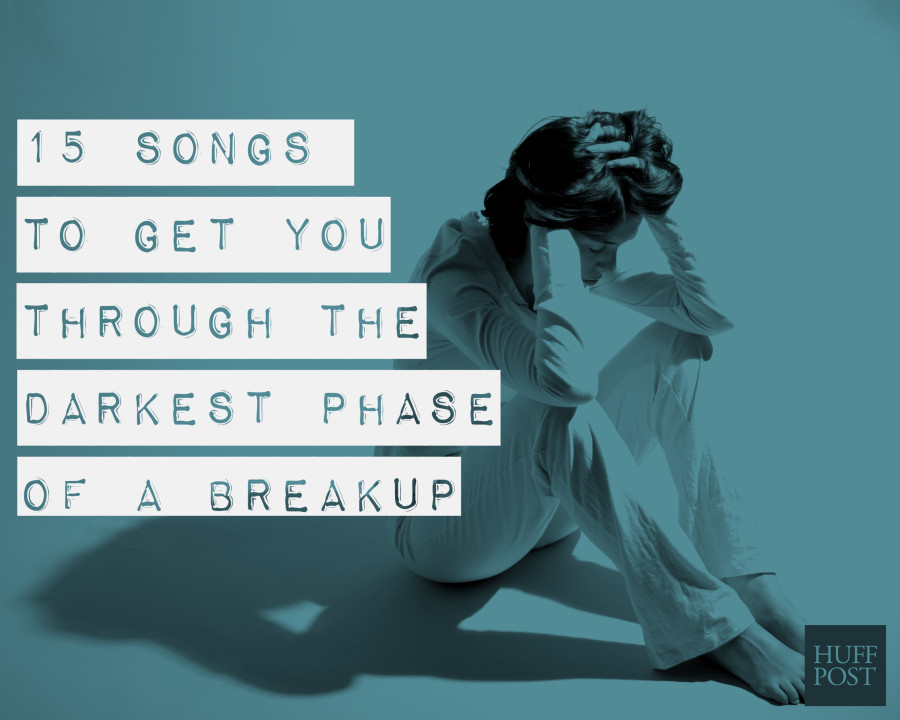Jim Shepard was in New York for a flying visit to see “Wolf Hall,” and agreed to meet for an interview at an unfortunately bustling café in Manhattan. As we sat outside, in an unseasonable chill, a misty rain began to dampen my notepad. “Are you cold?” he asked me suddenly, in the midst of the conversation. “Do you need to go inside?” He reassured me that he felt fine. “I’m just narcissistic enough to keep talking about myself,” he joked.
If so, he’s perhaps the most empathetic narcissist around. Shepard has long been celebrated for the exhaustive, meticulous research that underpins his fiction -- even a short story might demand months of digging through obscure texts on Soviet secondary schools. But it’s his chameleonic ability to find a point of connection with any subject that infuses his work with vitality.
Shepard talks like a writer of fiction, by which I mean that his conversation is littered with virtual quotation marks. Explaining why the Nazi Germans respected Janusz Korczak, a historical figure who features in his powerful new novel,
The Book of Aron, Shepard immediately ventriloquizes for them: “The Germans thought, ‘Well, this is a really impressive guy for a Jew.’”
At various points, he speculates on thoughts that might be held by a member of One Direction, a small child with fighting parents, the Nazis, readers of his new book, and himself. He restages entire conversations with himself, a delivery more fraught and uncertain than an enunciation of settled opinion. Shepard continuously shifts into different voices, inhabiting, if only for a moment, the experience of those most unlike him. If that experience is constructed, it is at least, as he himself puts it, “a plausible illusion.”
Shepard’s gift for drawing out the most elemental, human narratives against a backdrop of tremendous scale reaches its apex in
The Book of Aron, a haunting novel told from the perspective of a young boy struggling to survive in the Warsaw ghetto in the final, grim years of Nazi power. He spoke with me, despite the inauspicious weather, about the book, making art about the Holocaust, and the authors who inspired him to write:
Why did you write this book?
An old student had said, “How come you never wrote about this guy Korczak?” I’ve always been leery of writing about great men and women. First of all, I’ve always been uncomfortable with hagiography, and I think most of the time literature should be dismantling our sense of ourselves, rather than making us feel like “goshdarn, we’re wonderful!” Because we have so much work to do as human beings.
But also I always felt like whatever conflict you could raise in these people’s lives just looked paltry compared to whatever they were doing. It’s like, “Jesus, you know, he really had trouble relating to women.” I went back over Korczak’s ghetto diary, and I came across a story of when he was stuck with a child who was screaming for three straight days. And finally he said, “If you don’t stop, I’m going to turn you over to the Germans.” And this was a ten-year-old! And it worked! And instead of thinking the thing a normal person might think at that point, which is, “See, it wasn’t easy being Korczak! You had to make difficult decisions!” I thought, “God, how fucking miserable would that kid have to be?”
And then, of course, it hit me -- nobody in that orphanage was happy! When you were ten years old, and your whole family had died, and you were in this incredibly crappy place, all he was ever saying to them was, “I’m sorry, I don’t have any food.” It was very easy to feel like, “This place blows, and this guy blows. I hate this.” Imagine being with this amazing person, and being unable to appreciate it. And imagine how bad you feel if you’re that person who gives a saint extra trouble. That feeling I really could relate to, emotionally.
With Holocaust fiction, it’s easy to do a hagiographic depiction, but so many of these characters seem to be shown as their worst selves.
A shitstorm sort of brings that out. The truism is that it brings out the best and worst in people. And every so often it brings out the best, but mostly it brings out the worst. It’s very much a zero-sum game, something like the ghetto, where if I’m eating, you’re not.
One of the things that I wanted to get at with Korczak, as well, is when you’re that messianic, and you’re that hard on yourself, you feel like you have every right to be hard on those unfortunate people who’ve hitched their star to yours.
There have been debates about whether making art about the Holocaust is ethical. Did you feel concern about that while you were writing?
Yeah. I think it’s hard not to feel a concern about that. And a lot of that has to do, I think, with Adorno’s claim that art is impossible after the Holocaust. But the notion of that extremity of suffering that finally defeats either reproduction or the justification for reproduction, that’s a line that has been moving.
When I first started conceiving all of this, I thought, “Well they all go to Treblinka. And they all go to Treblinka at the very last time you wanted to be at Treblinka.” And I thought, “I know I can’t write about that,” as in, can’t pull it off, “and I’m pretty sure I shouldn’t write about it,” as in, I’m not going to gain enough by putting the reader through that. That balance you try to strike, when you’re dealing with that extremity of suffering, between sensationalism and sanitizing, has to be tipped when you get to the gas chamber.
I’ve read books at the two extremes -- books set in the concentration camps, and books about people who are hiding, many of whom escape. The ghetto experience, perhaps because it’s not hopeful or at the dramatic extreme, hasn’t gotten as much depiction in fiction.
I think that’s probably true. And I’m always struck by how good people are at pretending, when they’re in a pot that’s getting slowly warmed, that they’re not in a pot that’s getting slowly warmed. I think we’re all in that pot right now. Yeah, the water’s getting warmer. We’re clearly in the pot. But shoot, it’s not that hot yet!
I was struck by how the Jewish police force collaborated; the sense seemed to be, "Well, if we just participate in rounding people up and sending them away, it’ll be better for everyone."
And you can see how that logic works, as a kind of slippery slope, right? Because it’s like, “Well, Claire, somebody’s going to have to be coworkers at Huffington Post. Now, you don’t have to do it. But if you did it, you probably wouldn’t beat people quite as hard as if they did it. So you’re actually doing people a favor.” [
Editor’s disclaimer: We are neither required nor encouraged to beat anyone as a part of our employment at The Huffington Post.]
And, here’s another thing: Some of these people are going to be in deep trouble, but not all of them. Which group would you like to be in? One of the things the Germans were good at was continuously indicating, both explicitly and implicitly, to the Jews, that there were lots of divisions that were going to be made.
![shepard]() Often while reading from Aron’s perspective, you’re listening to the conversation of adults but can’t really make sense of what they’re saying. Is that just because I had no idea what was going on?
Often while reading from Aron’s perspective, you’re listening to the conversation of adults but can’t really make sense of what they’re saying. Is that just because I had no idea what was going on?
I hope you could make a little sense!
A little sense! But it seems like it’s left a little...
A little, because it’s the boy’s perspective. You don’t want the boy going, “Ooh, that’s the collapse of Army Group Center. That will lead to a breakthrough in three months!” I think I wanted to operate so if you have a good understanding of the history of the war, you recognize those signposts. If you don’t, you still know something important is happening, and it still makes emotional sense. I want that spectrum for the reader.
It was interesting to me because often when you read books from a child’s perspective, it’s so hard to get back to that place where, when you’re a kid, you hear things and you don’t know how to make sense of them.
And how much that leaves you in a vulnerable position. We all say about the Holocaust, from the Jews’ perspective, “Wow, it must have been difficult to decode what was coming, and how crucial it was to decode what was coming.” And that’s the child’s situation all the time. “Everybody’s talking about weird shit. I can pretty much pick up the inflection. It doesn’t sound good, what Mom and Dad are talking about, but I don’t know what ‘vasectomy’ means.”
Many of your stories incorporate dark humor into extremely violent or tragic situations, even in The Book of Aron. Did you feel nervous about introducing any comic moments into a book about the Holocaust?
That’s one of the things that I didn’t feel nervous about, because if you look at primary sources on the Holocaust, the more you realize that, for Jews everywhere, the humor just never went away. And that was part of their way of dealing with it. Their humor got darker and darker and darker, as the novel tries to suggest.
It’s easy to forget that the mechanisms the Nazis set up were not only diabolic, they were also absurd. They really were ridiculous.
You do so much research. There are pages and pages of sources acknowledged at the end of Book of Aron. How do you balance the research with creating a story?
Once I get snagged on a subject, part of what I’m doing is reading just enough to get the imagination going. Then I’m trying to put the fiction into motion well before I’m “finished” researching. Putting the fiction into motion is going to help me understand what I need to learn.
But I’m not trying to turn myself into an expert on that subject, I’m trying to get enough information to answer my questions and create a plausible illusion. Once I got the information I wanted, I start to vacuum it out of my mind. One of the hilarious things about writing stuff like this is, you get interviewed about it and asked about it two or three years after you learned this stuff. You’re treated sometimes as, “now you’re an expert on this,” and I’ve moved on to other things. So I’ll be obsessing about rainforests, and people will be like, “so tell me about the Soviets.”
You’ve written several acclaimed short story collections in addition to novels. What do you love most about each form?
What I love about stories is the way you can get in and out of them with such alacrity. And in a perverse way I’m particularly drawn to that with the research-heavy things.
I love the way a reader will say to me, sometimes with real peevishness, “God, I just got immersed in this entire world, and then it was over!” I think readers feel like if they’ve invested the imaginative energy, they want a trilogy. Once they figure out how Harry Potter’s school works, they want to stay there for 700 pages. And I am drawn to the opposite of, “Wow, I just got dipped in the French Revolution, and it was really vivid and visceral, and I’m out of it already!”
In that regard I’m a little impatient with what feels to me like the furniture-moving involved in getting a novel up and running. The novel, I think, has the advantage over the short story of accumulative power, that the short story simply can’t match over time. That sense of enormous satisfaction when all those patterns that you’ve been laying down finally come around. I’ve been, I suppose, way more moved by the most successful novel endings that I’ve come across than I have been by the most successful story endings. I don’t think there’s a short way of doing
Lolita. I think you need that much time and space to get there.
And so they are, in some ways, I think, more powerful experiences than short stories, but I love the power of the short story experience, anyway.
What book or author made you want to be a writer?
I think that being a writer means every step of the way coming across books that give you permission to write by allowing you to go, “Oh, you can do that? I love that!”
When I was very very small, it was probably Peanuts, which was precocious and funny at the same time, and sort of taught me that an amped up vocabulary was okay for a little person. When I got older, it was probably something like Salinger, who let me in on the notion that the world that I would have expected to be non-literary -- a bunch of people sitting around saying “Did you eat yet?” “No, did you?” -- was accepted as literary. That if you had a good ear, that might get you somewhere, even if you weren’t Henry James. Then when I got older than that, people like Flannery O’Connor, who taught me how you can have enormous stakes and comedy together. People like Nabokov, who taught me how much you could inhabit characters who seemed antithetical to tenderness and still get at tenderness. So those would be some of the steps along the way. From Peanuts to Nabokov.
-- This feed and its contents are the property of The Huffington Post, and use is subject to our terms. It may be used for personal consumption, but may not be distributed on a website.






























































